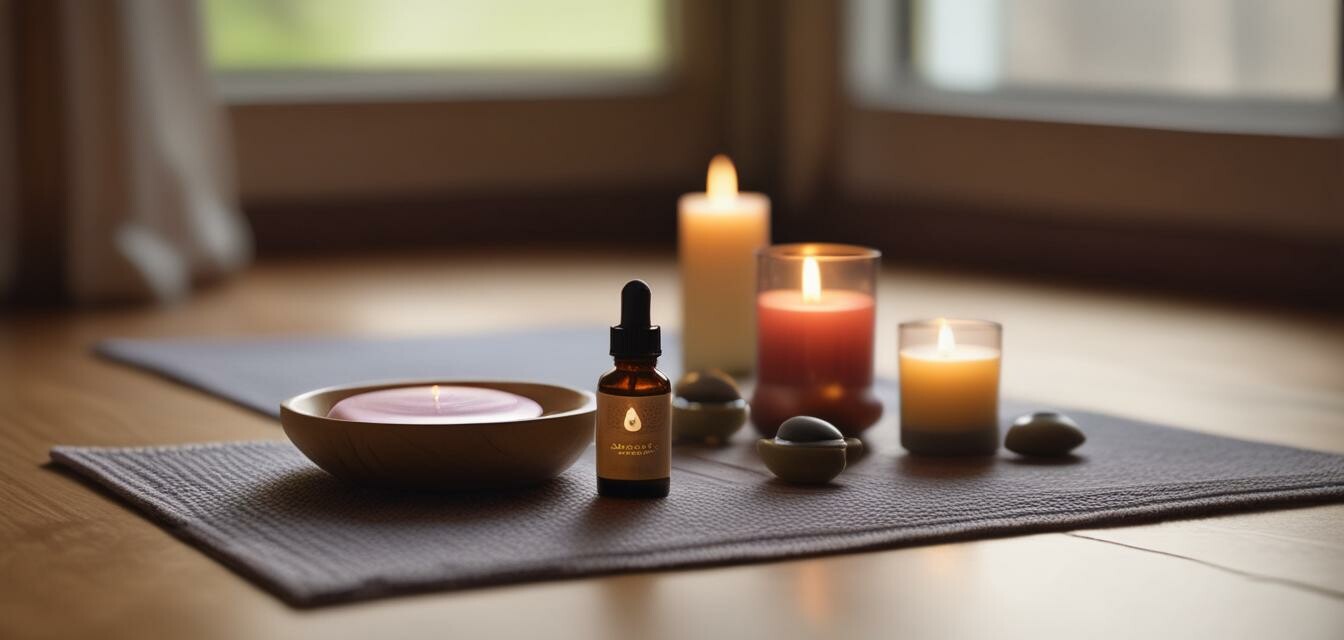
Incorporating Yoga with Aromatherapy
Key Takeaways
- Aromatherapy can enhance mindfulness and relaxation during yoga sessions.
- Essential oil selection plays a crucial role in the overall experience.
- Simple techniques can help maximize the benefits of both yoga and aromatherapy.
Aromatherapy and yoga are two powerful practices that can significantly enhance overall wellness and relaxation. When combined, they create an empowering experience that nurtures both body and mind. In this article, we will explore how you can seamlessly integrate aromatherapy into your yoga sessions, discuss the best essential oils for your practice, and share practical techniques to help you achieve a deeper state of mindfulness and relaxation.
Understanding Aromatherapy
Aromatherapy is the use of essential oils extracted from plants to promote overall wellbeing and relaxation. Each essential oil has its unique characteristics and is believed to affect the body and mind in different ways. By understanding the properties of various essential oils, you can select the most suitable ones for your yoga practice.
Benefits of Aromatherapy in Yoga
- Enhanced Relaxation: Certain scents can create a calming atmosphere that promotes relaxation.
- Increased Focus: Aromatherapy can help sharpen your senses and increase your mental clarity during practice.
- Improved Mood: Essential oils can uplift your mood and enhance your overall experience during yoga. }
Choosing the Right Essential Oils
When incorporating aromatherapy into your yoga routine, selecting the right essential oils is vital. Here, we’ll cover some commonly used oils and their benefits:
| Essential Oil | Benefit |
|---|---|
| Lavender | Calming and anxiety-reducing |
| Peppermint | Invigorating and refreshing |
| Frankincense | Grounding and soothing |
| Ylang Ylang | Balancing and mood-enhancing |
| Lemon | Uplifting and energizing |
Depending on your mood or intention for a yoga session, you can choose different essential oils from the list above. This selection can significantly enhance your yoga experience and help you achieve greater mindfulness.
Techniques to Incorporate Aromatherapy into Your Yoga Practice
Here are some effective techniques to seamlessly integrate aromatherapy into your yoga sessions:
- Diffusion: Use an essential oil diffuser in your yoga space to release your chosen scents while practicing.
- Topical Application: Dilute essential oils with a carrier oil and apply it to pulse points before starting your yoga session.
- Inhalation: Place a few drops of essential oil on a cotton ball or handkerchief and inhale deeply during poses that require focus and mindfulness.
- Spritzing: Create a room spray using essential oils mixed with water to freshen the atmosphere in your yoga space.
Creating the Ideal Atmosphere
The environment in which you practice yoga can greatly impact your experience. Consider the following tips for creating an ideal atmosphere:
- Dim the lights or use candles to create a soothing environment.
- Use soft, calming music to enhance relaxation.
- Arrange your yoga space to be free of distractions.
Yoga Poses that Complement Aromatherapy
Certain yoga poses can further enhance the benefits of essential oils. Here are some poses that work exceptionally well with aromatherapy:
| Yoga Pose | Description |
|---|---|
| Child's Pose | A restorative pose that helps to relax and calm the mind. |
| Savasana | A lying down posture perfect for enjoying essential oil aromatherapy during deep relaxation. |
| Seated Forward Bend | This pose can help stretch the spine while breathing in calming scents. |
| Corpse Pose | Great for concluding practice while absorbing the essential oil experience. |
As you incorporate aromatherapy into your yoga practice, remember that the goal is to enhance the overall experience and deepen your connection to yourself.
Important Considerations
While aromatherapy can greatly benefit your yoga practice, there are some important considerations to keep in mind:
- Always dilute essential oils before applying them topically to avoid skin irritation.
- Be aware of any allergies or sensitivities to specific oils.
- Choose high-quality essential oils for the best results.
Conclusion
Integrating aromatherapy into your yoga practice can elevate your overall experience and enhance your sense of mindfulness and relaxation. By selecting the right essential oils, utilizing effective techniques, and creating a calming atmosphere, you can transform your yoga sessions into a truly rejuvenating experience. For more ideas on wellness products that complement your journey, check out our aromatherapy products section for great options.
Pros
- Enhances relaxation and mindfulness.
- Personalizes yoga experiences with different scents.
- Creates a calming atmosphere conducive to practice.
Cons
- Some individuals may have allergies to certain essential oils.
- Requires proper knowledge on oil selection and application.
For more insights and tips on enhancing your health and wellness journey, explore our Wellness Tips category.
